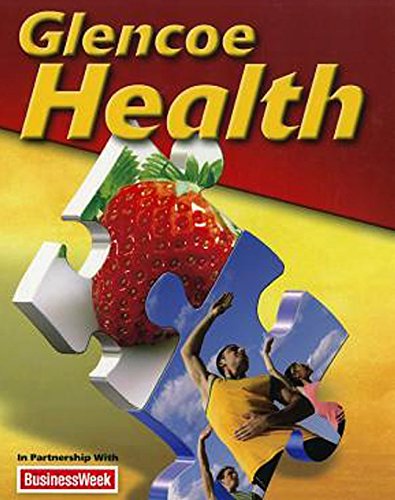
All Solutions
Section 21.3: The Impact of Alcohol Abuse
Alcohol addiction is a condition caused by chronic and excessive consumption of alcohol regardless of the legal, social, physiological and psychological health consequences.
POSSIBLE CONSEQUENCES OF ALCOHOLISM
1. Physical injuries and accidental deaths due to alcohol consumption
2. Alcohol-related diseases, like hepatic diseases
3. Changes in behavior
4. Impaired judgment
5. Mental health disorders, such as anxiety, depression, and psychosis
6. Involvement in violent crimes
7. Tendency to defy or resist the law
We are here to help you or your loved one:
(contact number)
Are you looking for Alcoholism Resources?
Alcoholism resources include medical and non-medical specialists, 24-hour hotlines, educational organizations and support groups for the alcoholics and their affected loved ones. These programs have a significant role in providing a safe and effective recovery plan and treatment against alcoholism.
ALCOHOLISM RESEARCH ORGANIZATIONS
American Academy of Addiction Psychiatry
www.aaap.org
401-524-3076
American Society of Addiction Medicine
www.asam.org
301–656–3920
American Psychological Association
www.apa.org
1–800–964–2000
Anxiety and Depression Association of America
www.adaa.org
240–485–1001
National Association of Alcoholism and Drug Abuse Counselors
www.naadac.org
1–800–548–0497
National Association of Social Workers
www.helpstartshere.org
ALCOHOLICS SUPPORT GROUPS
Alcoholics Anonymous (AA)
www.aa.org
212–870–3400
Moderation Management
www.moderation.org
212–871–0974
Secular Organizations for Sobriety
www.sossobriety.org
323–666–4295
SMART Recovery
www.smartrecovery.org
440–951–5357
Women for Sobriety
www.womenforsobriety.org
215–536–8026
LifeRing Secular Recovery
www.liferinf.org
1-800-811-4142
SUPPORT GROUP FOR ALCOHOLICS’ FAMILY AND FRIENDS
Al-Anon Family Groups
www.al-anon.alateen.org
1–888–425–2666
Adult Children of Alcoholics
www.adultchildren.org
310–534–1815
INFORMATION RESOURCES
National Institute on Alcohol Abuse and Alcoholism
www.niaaa.nih.gov
301–443–3860
National Institute on Drug Abuse
301–443–1124
www.nida.nih.gov
National Institute of Mental Health
www.nimh.nih.gov
1–866–615–6464
National Clearinghouse for Alcohol and Drug Information
www.samhsa.gov
1–800–729–6686
Blythe is a sophomore student of BS Psychology in a prestigious university in New York City. Blythe does have a great influence among the students in their university. She is known for her affability, intelligence, and competence. However, even though her popularity had been apparent, she remained the same, especially with her best friend, Cataleya. Blythe and Cataleya have been best of friends since they were in secondary school. They treat each other like they are biological sisters, they are inseparable.
However, all of this changed in just a night. In the cold December 31 afternoon, and the sun is about to set, Blythe and Cataleya decided to start getting ready for the Annual Year-end Celebration that their friends constantly organize. The two are having a great time dressing up and putting on each other’s make-up. After almost four hours, Blythe and Cataleya have decided to go to their friend’s penthouse where the event will take place.
As soon as Blythe and Cataleya arrived at the penthouse, they noticed that people are already having fun, some are dancing along with the beat of the music and some are drinking booze. Cataleya asked Blythe if she wants a drink, but Blythe refused. While Cataleya is getting a drink for herself, Blythe went to the poolside where their other friends are. As Cataleya joined them, the two had conversations with their friends with regards to the random events they had experienced in their life during the school year, they are catching up while Cataleya and Blythe’s other friends are continuously drinking alcohol.
There are only ten seconds remaining before New Year, and everyone is counting down. “…3 2 1! Happy New Year!”, Blythe and her friends shouted. Everyone started drinking alcohol again, except for Blythe. After having fun with their friends for hours, they had decided to end the party and go to their respective homes. A friend of theirs insist to drive them home, Cataleya and the others agreed, but Blythe didn’t. “Blythe, let’s go! Aly already offered to drive us home.”, Cataleya said in a dazed. “I can’t, Cataleya. Aly drunk a lot of alcoholic drinks at the party. It’s dangerous. Come here, I already called for my dad. He will pick us up.” Blythe replied anxiously. “I don’t want to wait. I wanna go home.”, Cataleya insisted. Blythe lets Cataleya go home with Aly since Cataleya is being persistent.
The next morning, Blythe woke up and saw that her phone has a hundred missed calls since three in the morning. It was Cataleya’s mom. She immediately called Cataleya’s mom, and she had been told that Cataleya and their other friends caught up in a horrible car accident, and Cataleya did not make it alive. Blythe was shocked. She did not know what to do and what to say. All she did was cry. Her best friend is already gone and it broke her heart.

